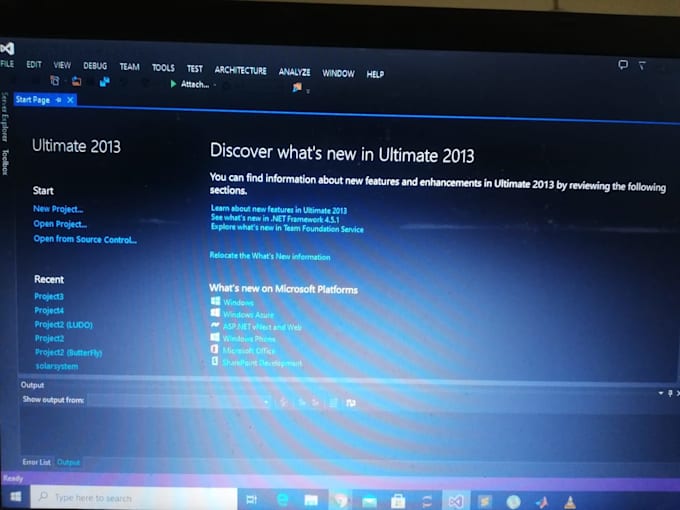- Gallery Explorer Programming Tutorial
- Gallery Explorer Programming Download
- Gallery 1 Explore Programming Pdf
- Gallery Explorer Programming App
Neighborhood Road Trip - Downtown Part 1 Explore Your Park 3. Coffee with the Cops. Explore Your Park 2. Neighborhood Road Trip - Redwood Oaks. Neighborhood Road Trip - Centennial. Explore Your Park 1: Veterans Memorial Building/Senior Center (Joint Project with YMCA) Neighborhood Road Trip - Bair Island. Neighborhood Road Trip - Roosevelt. The Gallery Plus automated discrete analyzer can accommodate 108 samples and 42 reagents in its separated sample and reagent disks, with the capability to perform as many as 350 tests per hour. Achieve superior analytical performance with a wide range of applications including food and beverage analysis, environmental testing, and industrial. First Explorers 2: Teacher's Resource Pack. The Gallery Plus automated discrete analyzer can accommodate 108 samples and 42 reagents in its separated sample and reagent disks, with the capability to perform as many as 350 tests per hour. Achieve superior analytical performance with a wide range of applications including food and beverage analysis, environmental testing, and industrial.

Gallery Explorer Programming Tutorial
Gallery Explorer Programming Download
Pages
These virtual offerings are suitable for schools, homeschools, and learning pods. Classes focus on deep looking, critical analysis, student interaction, and guided hands-on activities. (Visit our Learn at Home page for sessions made for families as well as homeschool groups and learning pods.)
To arrange for your program please begin by emailing Carol Hockett. Preparatory materials will be provided. Sessions (30-45 minutes each) can be held live on Zoom or Google Meet and be taught by Johnson Museum education staff.
Major funding for the Museum’s school programs has been provided by Evalyn Milman, Class of 1960, and Stephen Milman, Class of 1958, MBA 1959, and a grant from the New York State Council on the Arts.
Four-footed Friends: Museum Cats and Dogs
(Kindergarten and Grade 1)
Explore cats and dogs depicted throughout the collection, from ancient Egyptian cats to Japanese netsuke puppies. Then share a picture of your own pet!
From our collection
William Kentridge works many different media, from charcoal and ink to pencil, oil, and more. One of his favorite and most famous subjects is cats!
Museum Menagerie
(K to Grade-2)
Meet sea monsters, seven-headed snakes, and shape-shifting dragons during this session. Keep paper and pencil handy—this class includes a dragon-making activity.
From our collection
Chinese dragons are symbols of power and strength. They can be visible or invisible, and as small as the size of a silkworm cocoon or as big as the entire sky.
The Art of Storytelling
(Grade 3 and up)
Works in the collection with special stories such as the Buddha and Naga and the Three Laughers of the Tiger Glen will be featured as well as the traditional telling of a Japanese folk tale and guidance on the creation of your own Japanese kamishibai theater.
From our collection
This statue of the Buddha Seated Under the Naga was made in Thailand in the 13th or 14th century.
Art and Nature
(Grade 3 and up)
Learn about patterns in nature, science, and math connections and how they are used by artists including Andy Goldsworthy. The session includes ideas for using objects from nature in your own artwork.

From our collection
Leaf, river, stone was staged in Fall Creek Gorge and photographed during Andy Goldsworthy’s fall 1999 visit to Cornell University.
Write to See

(Grade 3 and up)
Sticky-note poetry, haiku, and free verse will be introduced in this workshop using artwork in the Museum’s collection as prompts for writing exercises.
From our collection
Jane Hammond’s rebus painting resembles an opened, three-ring binder and creates a puzzle in symbols that reads like a book, from left to right and top to bottom.
The Many Faces of Masks
(Grade 3 and up)
The fierce face mask of the samurai and the soaring forms of the antelope chiwara headdress will both be featured in this session which includes ideas for mask-making with materials from home.
From our collection
This Japanese noh drama mask is made of carved wood, plaster, lacquer, and paint. It would be worn in performances of musical dramas based on tales from traditional literature.
Picturing Change:
Photography and Social Justice
(Grade 5 and up)
Explore the work of photographers from Margaret Bourke-White to Gordon Parks and more as students talk with staff about the power of photography to focus the viewers’ attention on issues of inequality and injustice.


From our collection
Margaret Bourke-White graduated from Cornell in 1927. Her photograph led a feature story for LIFE Magazine documenting the devastation of Louisville, Kentucky, by Ohio River flooding in 1937.
Excavating Ancient Egypt
(Grade 5 and up)
Learn about mummification and explore objects from ancient Egypt including a worker figurine and amulets that would have helped provision the deceased for the afterlife. Each session includes hieroglyph-making activities.
From our collection
This Egyptian shabti is from 380–342 BC, a small human figure representing a person who would perform a given task for the deceased in the afterlife. It’s about eight inches tall and made of a glazed ceramic known as faience.
Mythology
(Grade 5 and up)
Gallery 1 Explore Programming Pdf
Gods, gorgons, and the snake-headed Medusa have inspired artists and writers for centuries. Students will explore a range of artworks together with staff and be introduced to a mask-making activity during this class.
Gallery Explorer Programming App
From our collection
Zeus Ammon combines the attributes of the Greek ruler of the gods on Mount Olympus with the Egyptian sun god Ammon.
